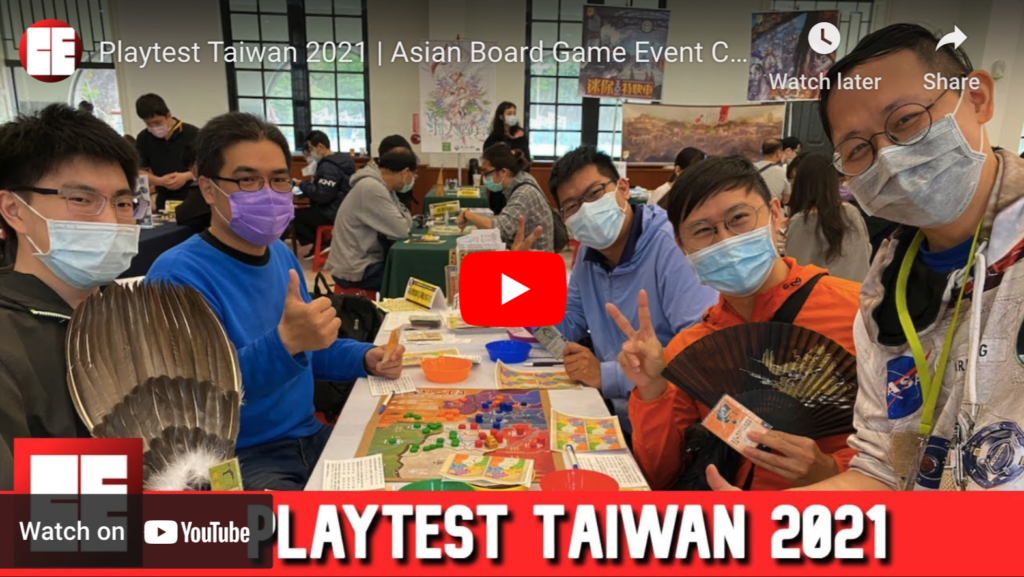Bad news and good news.
Bad news.
No new video this weekend. We’ve been busy editing another video from some contract work. I love board games and this website, but paid work comes first.
Good news!
I’ve designed a game that will be published by a Taiwanese board game publisher!
I (re)designed and developed (and still developing) the Taiwan map for Mini Express from Moaideas Game Design! Having called Taiwan my home for over 15 years, I’m incredibly excited and proud about this little side project.
David asked me to write a designer diary to share my thoughts on the design process, and as I’m always looking for more content, I gladly agreed.
For this first segment (if you pardon the self-indulgence), I wanted to share how I ended up here in this happy predicament.
“It’s a dangerous business, Frodo, going out your door. You step onto the road, and if you don’t keep your feet, there’s no knowing where you might be swept off to.”
— J.R.R. Tolkien, The Lord of the Rings
This isn’t the first time I’ve worked with Moaideas Game Design.
Last year, I helped them with their Mini Express Kickstarter campaign—they needed a place to shoot their campaign video with a wall of games as well as an editor for their script.
This year, I got to playtest their Taiwan map expansion at the 2021 Playtest Taiwan. You may have remembered this in my earlier video.
I found some of the new mechanisms really interesting but also discovered players had difficulty reaching the southern portion of the map. While I enjoyed my game with the new map (at that time the white shares were wild), I knew something needed to change.
Then, I saw this.
Although I’m a big fan of cube rail games, I have never played Trans-Siberian Railroad.
Cube rails are train games that take an abstract approach to track building—placing cubes into hex spaces on a board—which eliminates issues of track junction tiles or drawing tracks. (Source: BGG)
Hearing Jon passionately talk about his experience with Trans-Siberian Railroad got me thinking about my earlier game of the Taiwan map for Mini Express. The Soviets never really had a presence in Taiwan; however, Taiwan was ruled by Japan for 50 years, from 1895 to 1945.
For those of you unfamiliar with the history, after Japan won the First Sino-Japanese War, Taiwan was ceded to Japan by the Qing Dynasty in 1895 by the Treaty of Shimonoseki. As Japan’s first colony, Taiwan was meant to become the standard for future colonies. Japan intended to improve Taiwan’s infrastructure, public works, and economy. Eventually, Taiwan would then become a staging ground for future military expansion. Some of this was accomplished (and sometimes through rather harsh methods); however, due to the events of World War II, the development of Taiwan had to be deprioritized.

I thought this would be a fascinating theme for a Taiwan train game that, to my knowledge, hasn’t been explored much.
And before we continue further…
No. I didn’t want to explore the theme of colonization. I didn’t want players to be colonizers that exploited the indigenous people of a land and then pat each other on the back for being better at it than the chap to the left or the lady to their right.
Make no mistake. Japan killed a lot of people during their 50-year rule of Taiwan. In fact, many elderly Taiwanese people I’ve met still hold a lot of resentment and hatred for Japan. I don’t want to explore that. I also don’t want to completely demonize the Japanese either as some of the public works and infrastructure they built are still in use today.
I wanted to explore the concept of players willingly taking part in a dangerous feedback loop that is beneficial in the short term but extremely detrimental in the long term.
I also wanted this feedback loop to be completely player controlled. The players collectively and willingly tighten the vice they find themselves in.
I had an image of players driving around a race track. You could boost some nitro and increase your speed, but you’d also be shaving a few kilometers off the race. Before long, everyone is boosting around the track, and then suddenly and all abruptly, they discover there’s no track left, and they hit the wall. You have to boost; otherwise, you will lose. But can you identify when to pump the brakes and start slowing down while your competition is still racing ahead?
I may watch too much Fast and Furious.

I’m kidding. How is too much Corona-fueled Fast & Furious possible? My friend has this belief that the Fast and Furious movies are all D&D campaigns where the GM is obsessed with cars.
I had this idea of players being Taiwanese venture capitalists investing in Taiwanese industry during Japanese rule; however, on occasion, they needed to do business with Japan.
Suddenly, these train companies that once had difficulty reaching the southern part of the island could get there by having Japan suddenly build a longer train route with the ending city becoming a new starting city for all the train companies.
This would help the three train companies reach the southern tip of the island while making the white Japanese railway company rapidly max out in track length, making those white shares incredibly valuable, making players greedily purchase them, adding more trains to white, making it even more tempting for players to continue building more white trains, and on and on the feedback loop goes.
However, this loop needed teeth.

In my many games of Mini Express the base game, I never enjoyed watching stingy (and admittedly better) players swiftly swoop up influence and never spend it.
Taiwan was going to bite back.
I thought this feedback loop would be even more hilarious if with each interaction with the white Japanese company—be it purchasing shares or building track—a hard limit would slowly descend down the influence track.
Now, players could no longer max out their influence at 10, but instead, the limit could be pushed down to 9, then 8, then 7, then 5, then 3, and even 1 if the players were too greedy.
All of this hit me as I was taking a shower one night. I remember laughing and slipping on soap.
I immediately pitched David my idea, and to my surprise, he liked it and asked me to develop it further.
How did I get here, Gandalf?
In my next designer diary entry, I’ll share my initial concept, what worked, and what didn’t.
Spoiler Alert: A lot didn’t work.
Thanks for reading. If you’d like to check out more of my writing, check out some of the other articles here or head to my YouTube channel.
Once again, my name is Jay, and I play Asian board games.
Stay safe & keep gaming.




